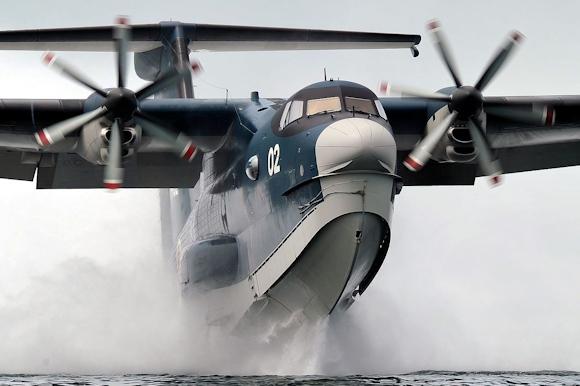The rapid growth of conventional long-range Chinese weapon systems, particularly the DF-21Ds, poses an existential threat to US airbases located within what China calls the first and second island chains. The People's Liberation Army Rocket Force, in fact, boasts a range of family missiles D which could affect infrastructure in Japan, South Korea and Guam.
The vulnerability of US bases in the region, particularly airbases, has created alarm in and around the military, from retired Admiral Harry Harris, former commander of the US Pacific Command, to civilian analysts.
Amphibious aircraft have a long tradition in maritime patrol and transport roles in the Pacific, but more importantly, they can operate in areas with limited logistical capabilities. These vehicles, in fact, are able to land and take off from rivers, lakes and oceans. They can therefore operate on the front lines from makeshift bases, even after a devastating attack on fixed infrastructure.
This capability, coupled with their proven reliability in maritime roles, make amphibious aircraft a promising complement to other US carriers in the Pacific. A perfect solution, therefore, for new and emerging operational scenarios, such as operations in support of advanced naval bases.
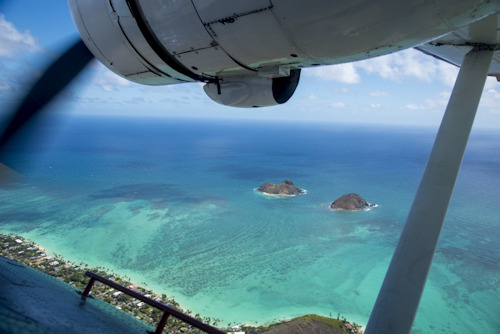
The American assessments regarding the possible use of amphibious aircraft find further validity also due to the recent plans of the Russian Federation to brush up on the design of a transport ecranoplane based on the Spatel designed by Alexeyev as an alternative to class Mon. Certainly Moscow's will is to use the ground effect vehicle (GEV) mainly in the Arctic regions (these aircraft could, given their characteristics, also operate between the Pacific islands). As written in a previous article, in fact, these means are in the next investment plans of the Russian Defense and it is certainly not to be excluded that a resumption of production of these means cannot be transformed into a purchase request by the Chinese (or their classic transaction of reverse engineering).
From a historical point of view, amphibious aviation was very popular in the first half of the twentieth century, just think of the countless flights conducted by Italian aviators such as Del Prete, De Pinedo up to the flyers of Balbo (the Atlanteans).
These aircraft did not need airports equipped to land, thus guaranteeing a wide operational flexibility.
During the Second World War one of the most famous and iconic seaplanes of all time emerged, the twin-engine Consolidated PBY Catalina (photo).
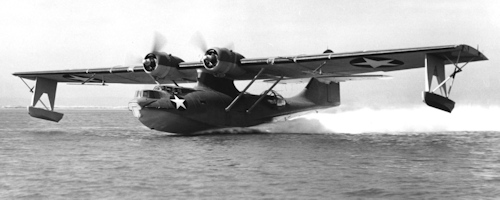
Il Catalina it was a versatile aircraft capable of serving in a multitude of roles, from search and rescue to transport to maritime patrol.
The US Navy, however, had many amphibious aircraft at the time: the Consolidated PB2Y Coronado, the Boeing 314 Clipper and the Martin JRM Mars.
British (Sunderland), Japanese (H8K), Soviet (MBR-2) and German (BV 238) forces also had amphibious aircraft in service during the war, and development continued throughout the conflict. The biggest of all was the massive H-4 Spruce Goose of the Hughes Aircraft Company, which held the world record for the longest wingspan of any aircraft until 2019.
In the 50s, the US Navy ordered the development of the Martin P6M SeaMaster, an amphibious jet aircraft capable of reaching high subsonic speeds and being armed with nuclear bombs. However, the program was canceled only a few months before reaching initial operational capability, as the US Navy diverted priority and consequently funds to the ballistic missile. Polaris that would go to arm the class submarines Washington e Ethan Allen.
 Variants of the Grumman HU-16 Albatross, a twin-engined piston amphibious aircraft, were in service with the USAF and the US Navy until the 70s and in the Coast Guard (photo) until the next decade. L'Albatross it was very successful in sales and was adopted in nearly two dozen countries, including Italy, mainly in the role of rescue aircraft, as well as having served as an anti-submarine aircraft (HU-16B) in the navies of Greece and Norway until the 90s.
Variants of the Grumman HU-16 Albatross, a twin-engined piston amphibious aircraft, were in service with the USAF and the US Navy until the 70s and in the Coast Guard (photo) until the next decade. L'Albatross it was very successful in sales and was adopted in nearly two dozen countries, including Italy, mainly in the role of rescue aircraft, as well as having served as an anti-submarine aircraft (HU-16B) in the navies of Greece and Norway until the 90s.
Unlike the Western world, seaplanes are having a great resurgence in the Indo-Pacific theater. The Asian navies not only have amphibious aircraft in service for maritime patrol, transport and search and rescue (SAR), but are also increasing their investment in this sector, as amphibious aircraft are seen as economic platforms that can be based and operated. from remote locations, with little logistics.
Russia, India, China and Japan are currently developing military seaplanes.
The Japan Self-Defense Force has a fleet of US-2 amphibious aircraft online ShinMaywa (opening photo) for long-range SAR tasks since 2003. In addition, Japan has been in talks for several years to export them to India. India would like to base these amphibious aircraft in the remote Andaman and Nicobar Islands to patrol the Strait of Malacca and at the same time to counter China's growing naval activity.
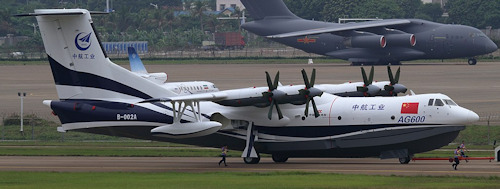 The People's Liberation Army Navy also has a long history of amphibious aircraft. The PLAN had in service the Harbin SH-5 and the Qing-6, an export variant of the Russian Beriev Be-6. The SH-5, in addition to operating in maritime surveillance and anti-submarine combat, also had the role of naval bomber.
The People's Liberation Army Navy also has a long history of amphibious aircraft. The PLAN had in service the Harbin SH-5 and the Qing-6, an export variant of the Russian Beriev Be-6. The SH-5, in addition to operating in maritime surveillance and anti-submarine combat, also had the role of naval bomber.
Beijing today is replacing its old fleet of amphibious aircraft and has ordered the AVIC AG600 Kunlong (photo), whose entry into service is scheduled for mid-2021.
Lastly, Russia, which after renewing its interest in ecranoplanes on 3 September 2019, announced a relaunch of its Beriev A-42 Albatross, a program officially ended in 1993 after the fall of the Soviet Union. According to the Russian Defense Ministry, the Albatross in the role of maritime patrol vessel will be able to accommodate torpedoes in the hold APR-3E, mines, acoustic buoys and Kh-35 missiles attached to wing pylons.
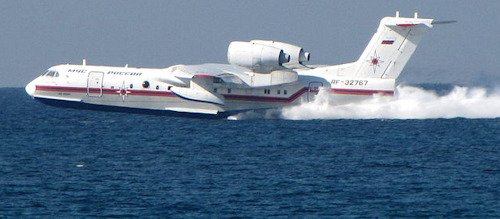 In February 2020, the Voyenno-Morskoi Flot also began testing with another amphibious aircraft, the Beriev Be-200ES (photo), to be used initially in SAR tasks.
In February 2020, the Voyenno-Morskoi Flot also began testing with another amphibious aircraft, the Beriev Be-200ES (photo), to be used initially in SAR tasks.
From the US point of view, however, the development of an amphibious platform would be to be seriously considered due to the extensive experience in the sector even if, perhaps collaborating with the Japanese for a development of the US-2.
It is good to remember that a seaplane has as negative points the reduction of efficiency and payload compared to airplanes land however, the ability to take off and land without a runway is a huge tactical advantage, especially in an operational theater like the Pacific one.
The incorporation of amphibious aircraft into the US Navy and US Marine Corps would further enhance their operational capabilities in the Pacific, as well as implement their projection and deterrence capabilities.
Photo: Japan MoD / US Indo-Pacific Command / US Navy / US Coast Guard / Alert5 / Michael Sender

